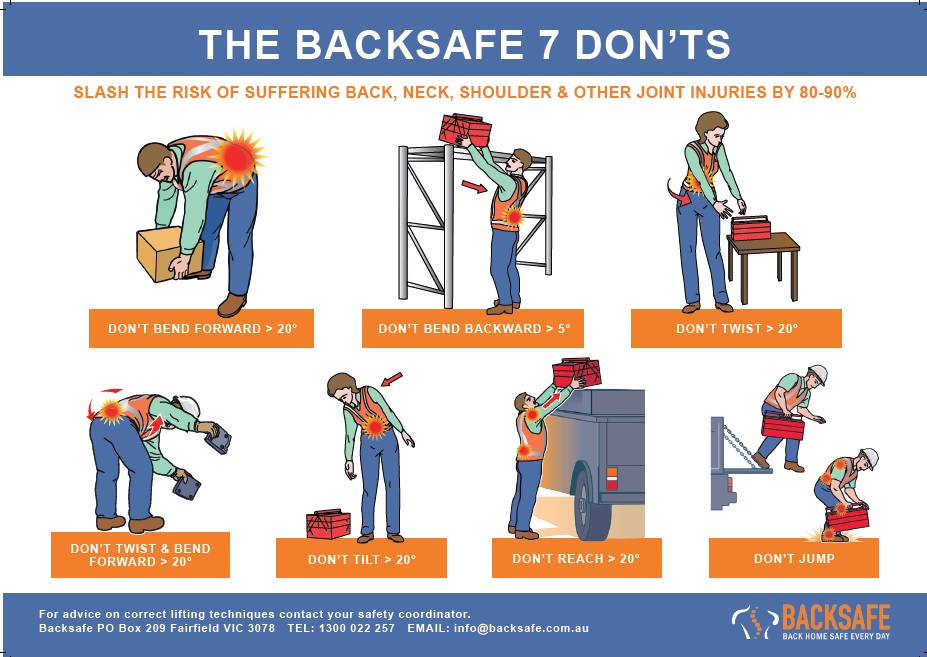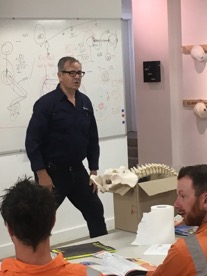Exposure to sustained vibration can have significant effects on both the human body and mind. From understanding the characteristics of sustained hand-arm vibration to exploring the various biological and psychological impacts, it is crucial to comprehend the potential risks and take appropriate preventive measures.
This article aims to delve into the topic, shedding light on the definition of manual handling resulting in sustained vibration, its common sources, and its effects on different systems of the body. It will also discuss the psychological effects of sustained vibration, occupational exposure in different industries, and strategies to mitigate and prevent these effects.
Understanding Sustained Hand Arm Vibration
Sustained vibration refers to continuous or repetitive oscillatory motion that is transmitted to a person’s body. It can occur in various contexts, such as occupational settings, transportation, using hand held power or air tools, hand guided machinery like powered lawn mowers and recreational activities. To fully grasp the effects of sustained vibration, it is essential to define its characteristics and identify its sources.
Understanding sustained vibration is crucial for assessing its impact on human health and well-being. When individuals are exposed to prolonged periods of vibration, it can lead to various health issues, including musculoskeletal disorders, circulatory problems, and even neurological complications.
Definition and Characteristics of Sustained Vibration
Sustained vibration typically involves low-frequency oscillations that are felt by an individual over an extended period. These manual handling tasks which lead to extensive vibrations can be transmitted through different mediums, such as using power tools or heavy machinery and are measured in terms of frequency, amplitude, and duration.
The effects of sustained vibration depend on these factors, as well as the individual’s susceptibility and duration of exposure.
Moreover, sustained vibration can have varying impacts on different parts of the body. For instance, prolonged exposure to vibration can lead to disrupted circulation, damage to nerves resulting in tingling, or a numbness in the hand, or further musculoskeletal symptoms such as damaging of tendons, muscles, bones and joints.
By understanding the specific characteristics of sustained vibration and its effects on different body regions, professionals can tailor interventions to protect individuals from potential harm.
Common Sources of Sustained Vibration
Sustained vibration can originate from various sources, including machinery, vehicles, and even everyday objects.
Industries such as construction, mining, and manufacturing often expose workers to high levels of vibration and thus can be some of the most at risk professions.
Additionally, transportation modes like helicopters, trucks, and trains can subject individuals to sustained vibrations. It is crucial to recognise these sources to implement effective preventive measures.
Factors influencing exposure to hand arm vibrations
By staying informed about the common sources of sustained vibration, employees and individuals can leverage technological solutions to prioritise the wellbeing and enhanced safety of a workplace.
Below is a list of factors that influence the adverse effects of exposure to vibration and note the important tools, environments and individual characteristics to look out for in your workplace
Tool Characteristics
- Higher vibration emissions
- Larger surface area of hand in contact with tool
- Poor tool maintenance
- Little or no handle insulation
- Heavy tools
Work Organisation
- Long exposure during each daily shift and/or work
- Harder material being worked with (eg. Concrete)
- Bad working postures and working overhead
- Short or few rest periods
- Cold temperatures
Individual characteristics
- Gripping the handle more tightly than needed
- Low operator skill or poor technique
- Lifestyle factors such as smoking
- Medical history such as disease or prior injury to fingers, hand or wrists
Advancements in technology have led to the development of tools and equipment designed to reduce vibration exposure in various industries. Innovations such as anti-vibration gloves, vibration-dampening materials, and ergonomic seating options are aimed to minimise the health risks associated with sustained vibration.

Biological Impact of Sustained Hand Arm Vibration
The human body responds to sustained vibration in complex ways, impacting different physiological systems. Understanding these effects is crucial for assessing health risks and ensuring the well-being of individuals who are regularly exposed to vibration.
Effects on the Musculoskeletal System
Sustained vibration can have detrimental effects on the musculoskeletal system. Prolonged exposure to vibration can lead to muscle fatigue, discomfort, and even musculoskeletal disorders such as vibration white finger or hand-arm vibration syndrome. The vibrational forces can affect the joints, bones, and tissues, increasing the risk of injuries and chronic conditions.
Impact on the Nervous System
The nervous system can also be affected by sustained vibration. Vibrations transmitted to the body can stimulate nerve fibres, leading to sensory disturbances and nerve damage.
Long-term exposure may result in numbness, tingling sensations, and decreased nerve conductivity, affecting the overall neurological function.
Cardiovascular System Response to Vibration
Sustained vibration also triggers responses in the cardiovascular system. The body interprets the vibrations as stressors, causing changes in blood pressure, heart rate, and circulation. These responses, over time, can contribute to the development of cardiovascular diseases and impair the overall cardiovascular health of individuals exposed to sustained vibration.
Psychological Effects of Sustained Vibration
Sustained vibration not only affects the physical well-being of individuals but also has psychological implications. The constant exposure to vibrations can have a significant impact on various aspects of mental health.
Impact on Sleep Quality
One of the major psychological effects of sustained vibration is its interference with sleep quality. Vibrations can disrupt sleep patterns, causing difficulties falling asleep, maintaining sleep, or achieving restorative sleep. Sleep disturbances can lead to fatigue, irritability, and decreased cognitive performance, negatively impacting overall well-being.
Cognitive Function and Vibration Exposure
Sustained vibration can also affect cognitive function. Studies have shown that exposure to vibrations can impair attention, memory, and concentration. This can hinder cognitive tasks, such as decision-making and problem-solving, ultimately affecting productivity and overall cognitive performance.
Conclusion
Exposure to sustained vibration can have wide-ranging effects on both the physical and psychological well-being of individuals. Understanding the characteristics of sustained vibration, its sources, and its impact on various systems is crucial for implementing preventive measures.
By recognising the potential risks and implementing suitable strategies, we can ensure the safety and well-being of individuals in both occupational and non-occupational settings. Through engineering controls, proper personal protective equipment, and health monitoring, the impacts of sustained vibration can be minimised, safeguarding the health of individuals in diverse environments.




